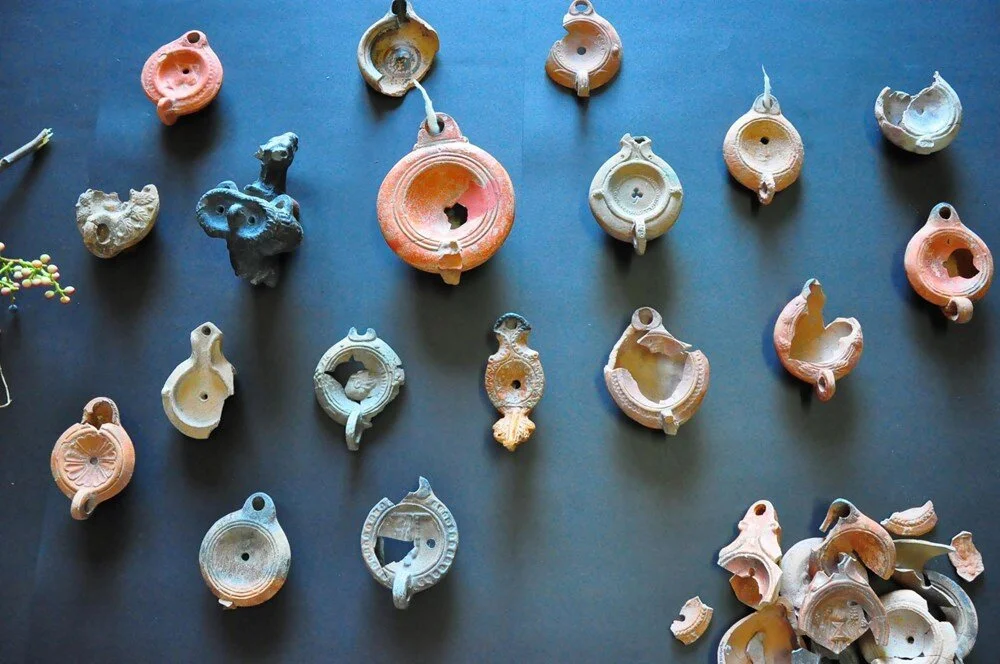In the ancient city of Aigai, one of the 12 Aeolian cities established in Western Anatolia, hundreds of oil lamps were found, ranging from the most recent being 1800 years old to the oldest being 2,500 years old.
Aigai Ancient City is located within the boundaries of Manisa province today. Aigai Ancient City was built on Mount Gün, part of a mountain range now known as Mount Yunt, which was referred to as Aspordene in ancient times.
Mount Yunt is surrounded by the Bakırçay River (ancient Kaikos) to the north, the Gediz River (ancient Hermos) to the south, the plains of Kırkağaç and Akhisar to the east, and the Çandarlı Gulf to the west. In ancient times, Mount Yunt also marked the boundary between the Lydia region’s Aiolis and Mysia regions.

2,700-year-old Aigai Ancient City was beging its 2023 excavation works under the leadership of Professor Dr. Yusuf Sezgin, the head of the Department of Archaeology at Manisa Celal Bayar University.
The excavation focused on uncovering the historical roads of the ancient city and concentrated in the area of the Athena Temple.
The findings suggest that olive oil was used as fuel in hundreds of oil lamps in the ancient city, with the most recent ones being 1,800 years old and the oldest ones dating back 2,500 years.

Prof. Dr. Yusuf Sezgin stated, “The 2023 excavation works began in mid-May and are actively ongoing. This year, we continue our efforts to uncover the ancient roads and work in the area of the Athena Temple. Excavations have been carried out intensively in the city since 2004. We have come across a large number of lamps in the excavations. One of the most fundamental needs of human beings is shelter, and the corresponding need is actually for lighting. Illuminating homes during the darkness of the night is a basic requirement. Many lamps, especially in a garbage pit we excavated in the city in 2015, were found. These lamps had been broken and damaged, and they had been discarded. After restoring them, we obtained many lamps.”

Sezgin continued his remarks by saying, “The fuel used in these lamps is primarily olive oil, which was a fundamental resource in ancient times. Olive oil served two main purposes in antiquity. First, it was used as fuel for lighting in lamps, and secondly, it was used for body lubrication. It was used less frequently in cooking. These lamps reveal a lot to us. The land of the ancient city is suitable for olive oil cultivation. Besides olive trees, we also encountered a significant presence of pistachio (terebinth) trees in Aigai. Until recent times, there were workshops in many areas near the ancient city that produced pistachio oil. They primarily used pistachio oil in cooking.”
Cover Photo DHA




